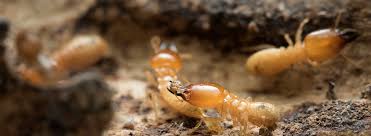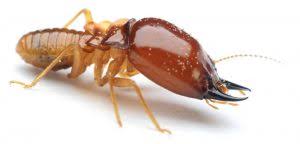All about Termite Control For Trees
Installing a reticulated system under the concrete slab enables chemical barriers to be applied and re-applied whenever necessary. The National Construction Code (NCC) requires termite prevention to be incorporated during the construction of new and existing buildings in Australia.
These measures rely greatly on barriers to stop termites entering timber or the premises from the underlying land. Currently, two types of barriers are physical, utilized or chemical, often in combination.


Our Termite Control For Soil Statements
Stone barriers can be installed surrounding and/or underneath concrete slabs or beneath a suspended floor. Unfortunately this type of barrier is not suitable for tropical northern places, which can be inhabited by large termites (Mastotermes Darwiniensis) that can make their way through a standard granite chip barrier.
In the previous new homes were shielded by spraying the sand pad with organochlorine chemicals. An increased awareness of the effects of these chemicals on both health and on the environment resulted in the Commonwealth Government banning the use of organochlorines from 30 June 1995. It is however important to keep in mind that the pesticides or termicides which have substituted organochlorines are not as helpful in the longer term. .
There are environmentally friendly procedures of control available through some pest controllers. If you choose this method it might not always be as effective as the procedures described on page 1 of this fact sheet.
Many new buildings use a termicide treated coating of soil surrounding and under the building. This forms an integrated barrier, together with the techniques. The termicide is applied to the soil under the slab and around the footings, pipes, conduits and other structures of the house during construction to make a vertical barrier.
Termite Control For Trees for Beginners
Timber used to construct houses, outbuildings, fences and other outdoor structures can be treated with chemicals. These are commonly referred toas treated timbers and ought to be considered at the time of designing or constructing the buildings.
To successfully incorporate termite barriers into existing buildings, tactical drilling through concrete slabs, porches, flooring and wall footings might be needed, in addition to under ground treatment.
Building and Energy recommends only licensed pest controllers execute this work. Chemical baits Strategically put bait stations can be employed to lure termites into a food source, for example dry wood or paper deny. About 30 bait stations are needed for a home and they need to be inspected regularly to evaluate activity. .
Once the termites are attracted to the bait station, a specific termicide is added that sticks to the termite.
Unknown Facts About Termite Control For Soil
To deal with termites in the garden, specialised pest managers drill into wood or the trunk of a tree to insert temperature probes which help locate the termite nest. Despite regular inspections of this garden, termites can enter your home. In the home, the first indicator might be a small discolouration of a wall , followed by warping if wood panelling is used to line the wall.
Take time to Our site investigate the dimensions and nature of the problem in addition to the options available for termite eradication. .
Whichever system you choose, it is important to perform routine inspections in particular inspect your house every six months for any apparent signs of infestation. Building and Energy recommends you arrange for an inspection by a licensed pest control operator at least once a year to search for signs of infestation and also to undertake any preventative measures. .

The Definitive Guide to Termite Control For Soil
For existing buildings, where you have already found signs of infestation, chemical treatment is the only option for destroying the termite nest. This treatment can include re-establishing a compound and/or physical barrier and regular inspections to discover any ongoing or new termite action.
Treatment using a termicide into tunnels of this nest in which termites are known to be more active can reduce numbers, but it seldom eliminates the colony altogether unless it is used in conjunction with another method.
When buying an existing house, Consumer Protection recommends including a White Ant Certificate clause in the Offer and Acceptance form. This is intended to create certain that the home is free of termites and there is no structural damage from any previous infestation. A separate fact sheet about the need for wood pest inspections and reports when buying home can be found from the Department of Commerce by contacting the Consumer Protection Advice Line on 1300Â 304Â 054.